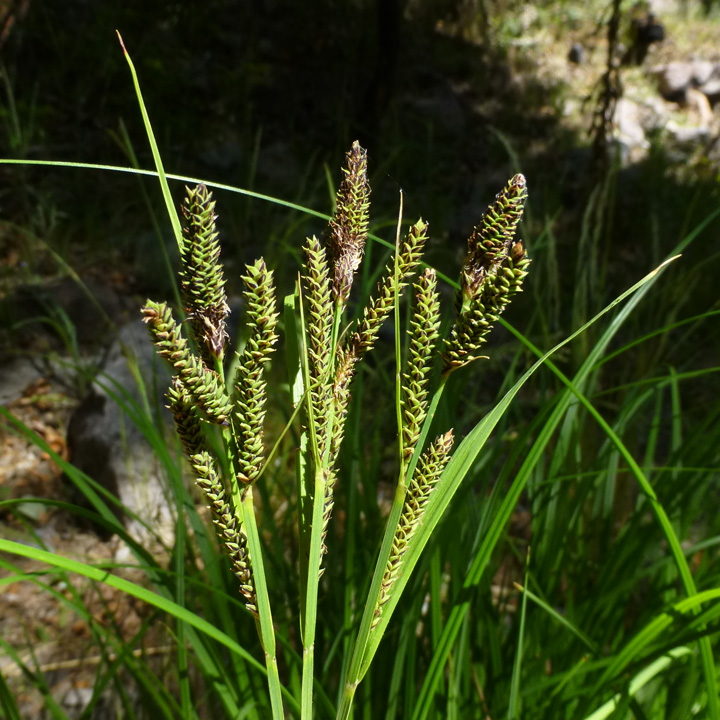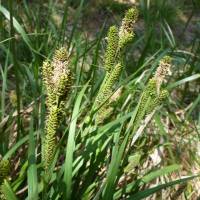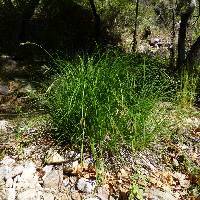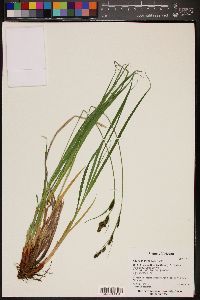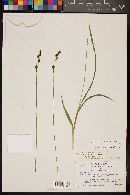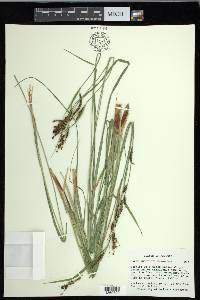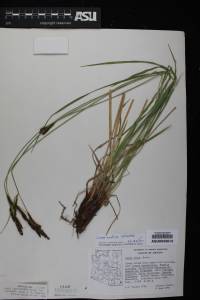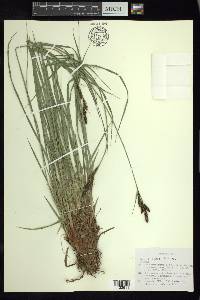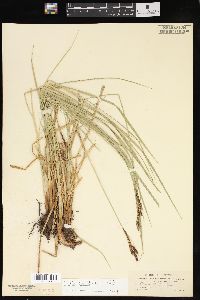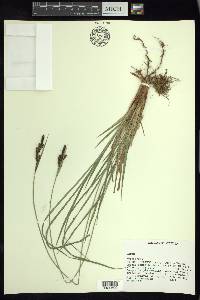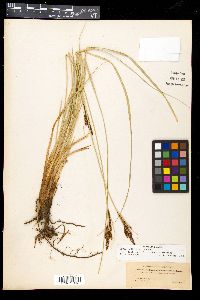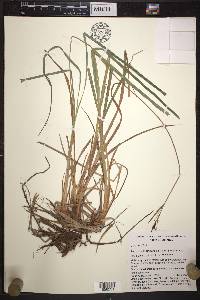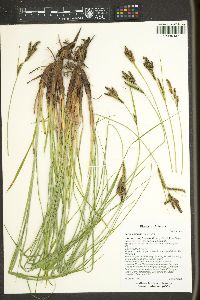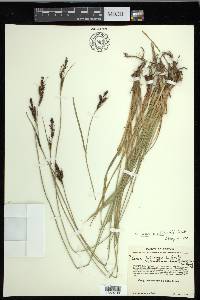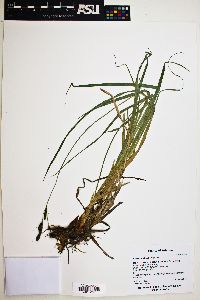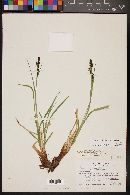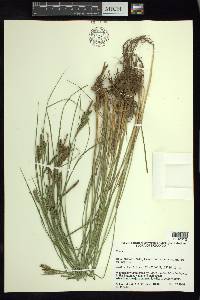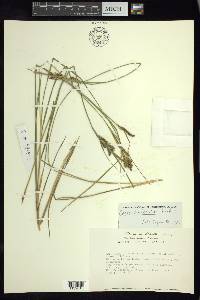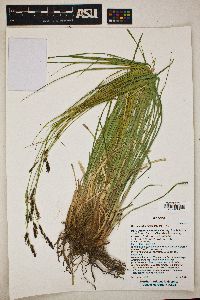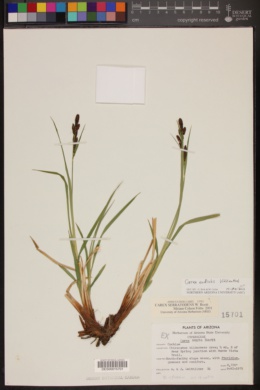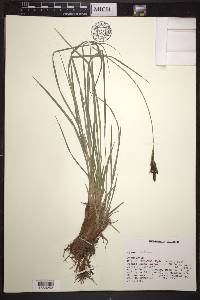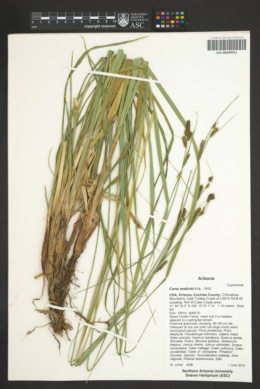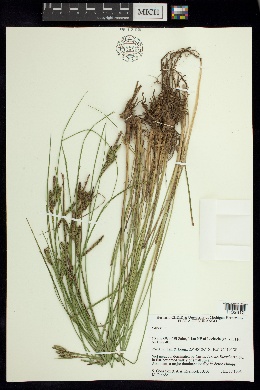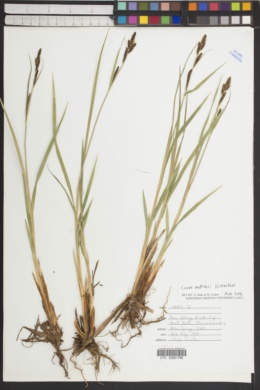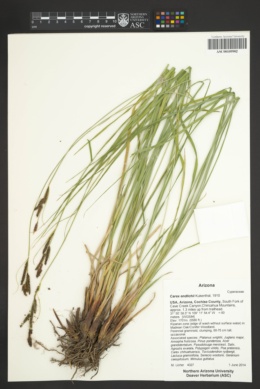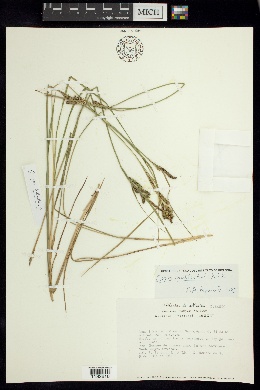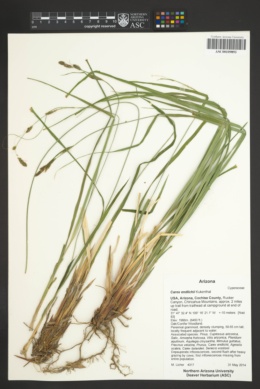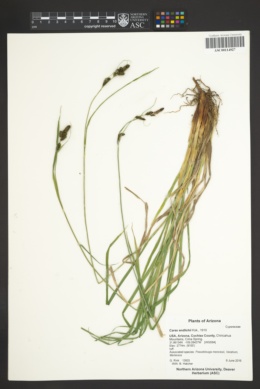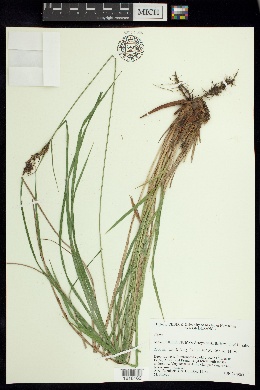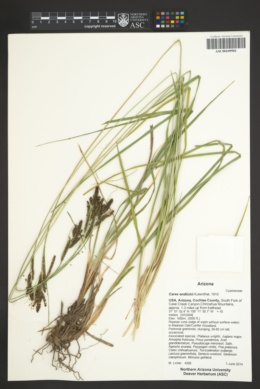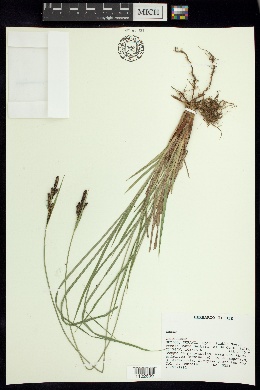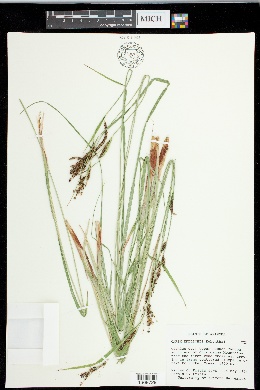
|
|
|
|
Family: Cyperaceae
Endlich's Sedge
|
Plants cespitose. Culms acutely angled, 30-50 cm, scabrous. Leaves: basal sheaths red-brown, ladder-fibrillose; sheaths of proximal leaves glabrous, fronts red-brown spotted, veinless; blades 2.5-4 mm wide. Inflorescences: proximal bract subequal to inflorescence, 1-3 mm wide. Spikes erect; proximal 3-4 spikes pistillate, 2.5-4 cm × 4 mm, base attenuate; terminal 1-2 spikes staminate. Pistillate scales red-brown, shorter than perigynia, apex obtuse, awnless. Perigynia erect, orange-brown at maturity, veinless, somewhat flattened, tightly enclosing and distended by the achenes, obovoid, 2.3-2.5 × 1.3-1.5 mm, dull, apex acute, glabrous; beak white with red-brown spots, triangular, often twisted, 0.5-0.8 mm, orifice oblique. Achenes not constricted, dull. Fruiting May-Jun. Marshes, stream banks; of conservation concern; 0-400 m; Ariz.; Mexico. One locality for Carex endlichii is known from the Chiricahua Mountains of southern Arizona; it may be present at additional sites within the flora area. The perigynium surface of the species is unique, becoming orange-brown at maturity due to the dense packing of crystalline epidermal cells. The small size of the perigynia that tightly enclose the achenes and the flattened, somewhat twisted beak suggest a relationship with C. interrupta and C. torta.
Licher and Rink 2012, FNA 2002 Common Name: Unknown Duration: Perennial Nativity: Native Lifeform: Graminoid General: Cespitose plants with scabrous and acutely angled stems 30-50 cm tall. Vegetative: Leaves basally sheathed and red brown, the upper leaf sheaths glabrous, fronts red-brown spotted, veinless, the blades 2.5-4 mm wide. Inflorescence: With a bract subequal to the inflorescence, 1-3 mm wide, the spikes erect with the upper 3-4 spikes pistillate, 2.5-4 cm by 4 mm, the base attenuate, the terminal 1-2 spikes staminate. The pistillate scales are red-brown and shorter than the perigynia, with an obtuse apex that is awnless, the perigynia is erect and orange brown at maturity, veinless, somewhat flattened, tightly enclosing and distended by the achenes, obovoid, 2-2.5 by 1-1.5 mm, dull, acute apex that is glabrous, with a white beak bearing red-brown spots, these are triangular and often twisted but less than 1 mm, the orifice oblique. The achenes are not constricted but dull. Ecology: Found on stream banks and in marshes from 6,000-9,500 ft (1829-2896 m), flowers May-June. Distribution: Found in the Chiricahua Mountains in Arizona and south into Mexico. Notes: This species is known in Arizona primarily from the Chiricahua Mountains, though also from one collection in the Santa Catalina Mountains; it is primarily a Mexican and Central American species barely making it into the United States in southeastern Arizona. It is most closely related to Carex senta (see notes under C. senta for key differences). (Notes: Max Licher and Glenn Rink 2012) Originally described in 1910 by K-kenthal, now of serious conservation concern. Ethnobotany: Unknown Etymology: Carex is the classical Latin name for the genus, while endlichii is possibly named for Stephan Ladislaus Endlicher a 19th century Austrian botanist. Synonyms: None Editor: SBuckley 2012 |
This project was made possible in part by the Institute of Museum and Library Services [MG-70-19-0057-19].
Powered by Symbiota

